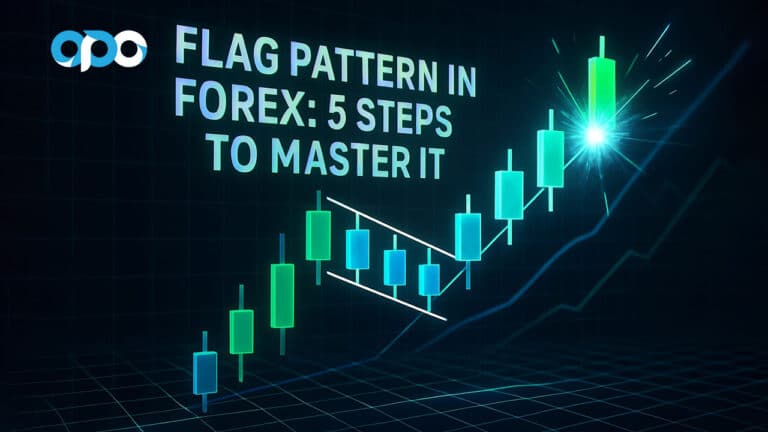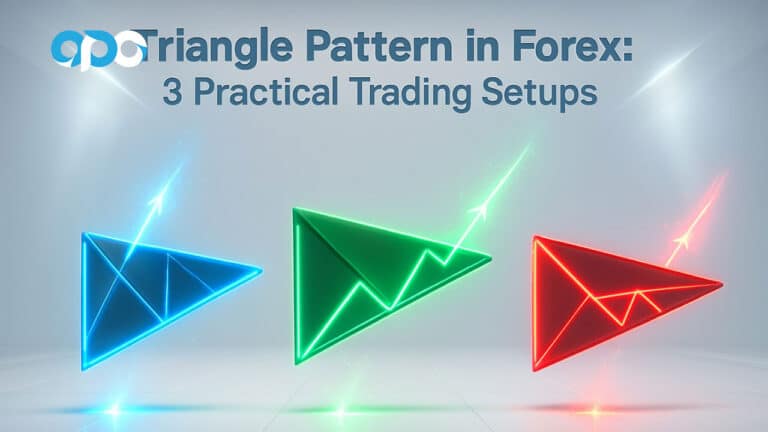Finding the best pairs for grid trading is the definitive factor between consistent profits and frustrating losses. It’s not about finding a magic ticker; it’s about matching a pair’s personality—its liquidity, volatility, and typical behavior—to your grid strategy. Whether you’re with a leading online forex broker or a crypto exchange, the principles are universal. This guide provides a definitive list of the top crypto and forex pairs for grid bots, explains precisely why they work, and shows you how to find your own winning combinations for any market condition.
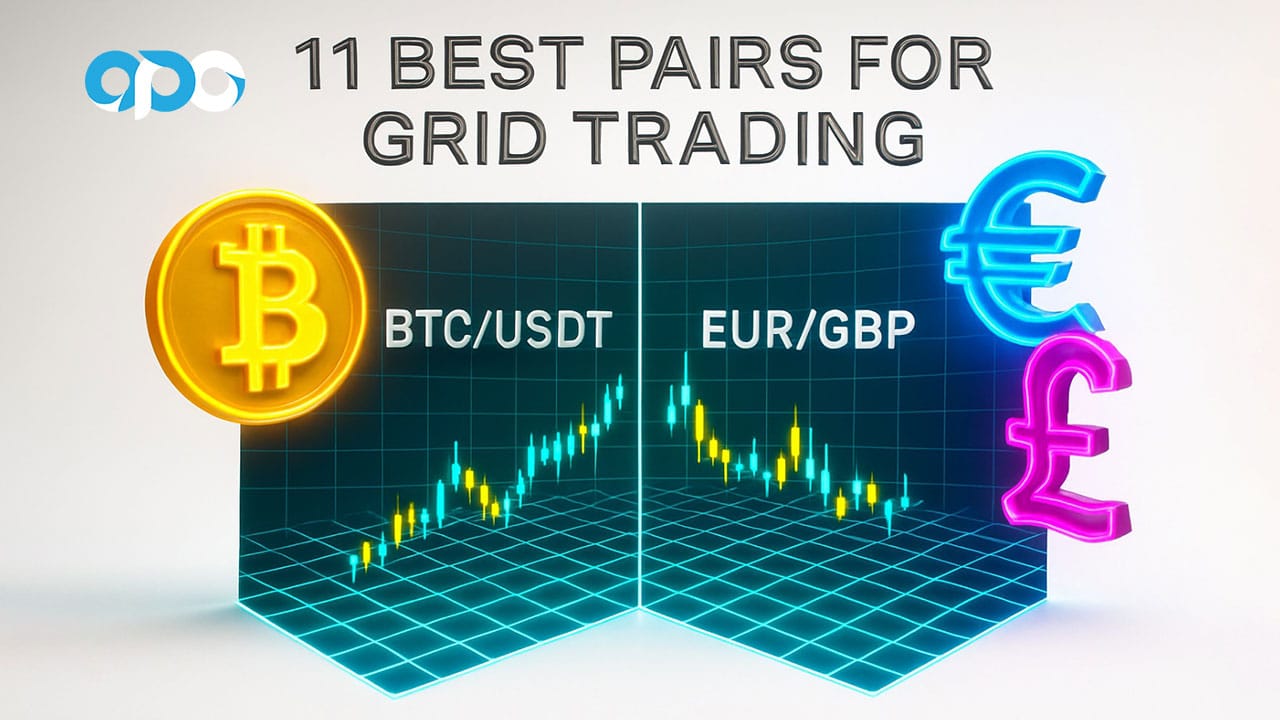
Key Takeaways: Best Trading Pairs at a Glance
Before we dive deep, here is a summary of the top crypto and forex pairs discussed in this guide. These have been selected based on their liquidity, volatility characteristics, and suitability for common grid trading strategies.
8:52 AM 8/9/2025
| Asset Class | Pair | Risk Level | Best For |
|---|---|---|---|
| Crypto | BTC/USDT | Low | Stable, rising, and ATR-based grids |
| Crypto | ETH/USDT | Low | Stable and rising grids in various market conditions |
| Crypto | BNB/USDT | Low-Moderate | Stable grids, especially with fee discounts |
| Crypto | SOL/USDT | Moderate | Actively managed stable grids in ranging phases |
| Crypto | XRP/USDT | Moderate | Ranging grids, avoiding major news events |
| Crypto | MATIC/USDT | Moderate | Cyclical, channel-like phases |
| Crypto | DOGE/USDT | High | Short-term, tightly monitored grids |
| Crypto | SHIB/USDT | High | Expert-level, hype-driven event trading |
| Forex | EUR/GBP | Low-Moderate | Classic range-bound, mean-reverting grids |
| Forex | AUD/NZD | Low-Moderate | Stable grids in non-trending commodity cycles |
| Forex | USD/JPY | High (for grids) | Adaptive, ATR-based, or directional grids only |
When Grid Trading Works Best
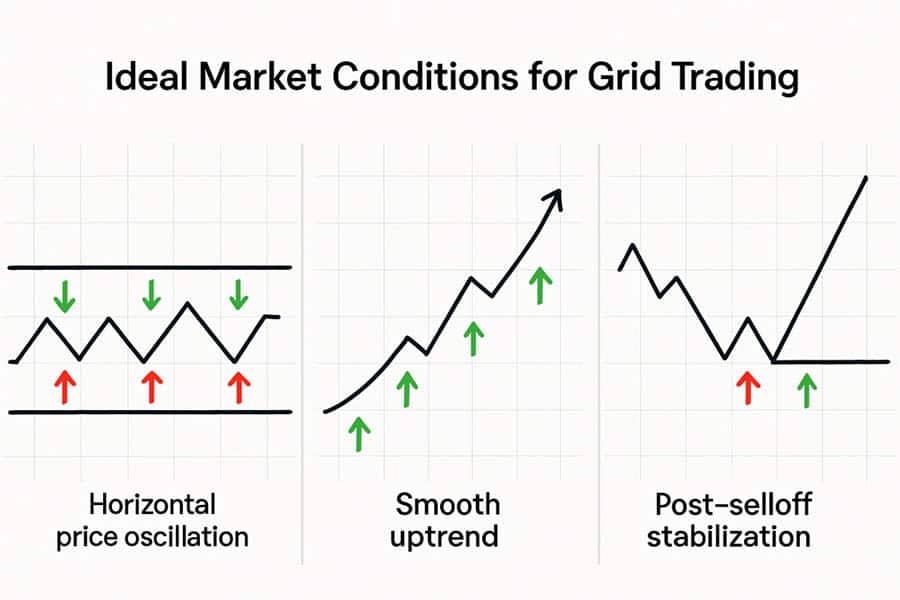
Grid trading isn’t an all-weather strategy. Its profitability hinges on deploying it in the right market environments. From my experience, forcing a grid bot to work in the wrong conditions is the fastest way to drain an account. The strategy truly shines in specific, identifiable phases. Understanding these windows is the first step to success, even before you consider which pair to trade.
Sideways & Ranging Markets
This is the textbook scenario for grid trading. When a pair’s price oscillates between a clear support and resistance level, a grid bot can systematically place buy orders on the way down and sell orders on the way up. Each time the price crosses a grid level, a small profit is locked in. The more swings within the range, the more transactions the bot completes, and the more profit it accumulates. This is the ideal hunting ground for finding the best pairs for grid trading.
Smooth, Controlled Uptrends
While less intuitive, a grid can be highly effective in a steady bull market. Here, you would use a “Rising” or “Trailing-Up” grid. The bot sets a grid that moves upward along with the price, continuing to buy the small dips and sell the small peaks within the upward channel. This allows you to profit from the asset’s overall appreciation while also capitalizing on the volatility along the way. It requires pairs that trend predictably without sudden, sharp reversals.
Post-Selloff Stabilization
Initiating a grid during a fresh, steep downtrend is a recipe for disaster. The bot will keep buying as the price falls, accumulating a significant losing position without any sell orders being triggered. However, the period *after* a major selloff, when the price starts to stabilize and form a new range, can be a golden opportunity. The volatility is often still present, but the directional bias has faded, creating a fertile environment for a neutral grid to capture profits from the emerging equilibrium.
What Makes a Best Pair for Grid Trading
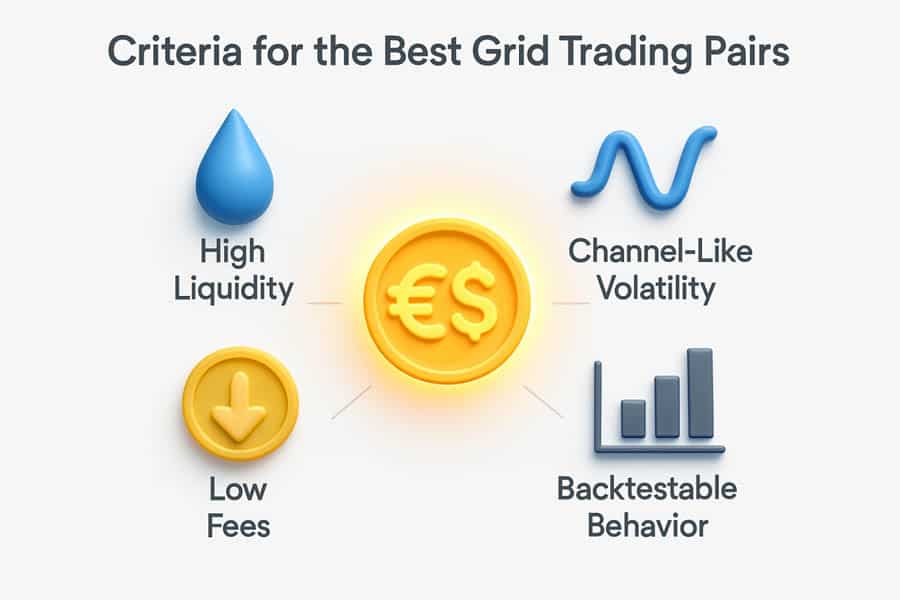
Not all trading pairs are created equal. The characteristics that make a pair great for long-term investing or swing trading can make it terrible for a grid bot. Selecting the right asset requires a specific lens focused on criteria that facilitate frequent, low-cost transactions within a predictable range. The best pairs for grid trading consistently exhibit a combination of the following traits.
High Liquidity & Tight Spreads
This is non-negotiable. High liquidity, meaning high trading volume, ensures that your buy and sell orders are filled quickly and at the price you expect. Illiquid pairs suffer from wide bid-ask spreads and high slippage. Slippage is the difference between the expected fill price and the actual fill price. In a strategy that relies on capturing dozens or hundreds of small profits, high spreads and slippage can erode your gains entirely. This is why major crypto pairs like BTC/USDT and major forex pairs are often the starting point.
Channel-Like Volatility
Volatility is the fuel for a grid bot, but it needs to be the right kind. You want a pair that moves enough to cross your grid lines frequently but does so within a defined channel. Runaway trends are the enemy of a standard grid. Tools like Average True Range (ATR) and Standard Deviation can help quantify this. A pair with a consistent ATR that doesn’t suddenly expand or contract is ideal. It demonstrates “channel-like” volatility, where the price tends to revert to a mean rather than break out into a new, sustained trend.
Fee Efficiency and Exchange Infrastructure
Grid trading is a high-frequency strategy. You will be executing many trades, and each one incurs a fee. Therefore, the fee structure of your exchange or broker is paramount. Look for platforms with low maker/taker fees. Some crypto exchanges offer fee discounts for holding their native token or provide rebates for high-volume traders. These small savings add up significantly over time and can make or break the profitability of a dense grid strategy. A reliable execution engine is just as important; you need a platform that won’t lag or fail during volatile periods.
Backtestable Behavior
Hope is not a strategy. The best way to gain confidence in a pair is to see how it would have performed historically. Modern trading platforms offer powerful backtesting tools that allow you to simulate your grid strategy on past data. Look for pairs that show consistent profitability across multiple timeframes (e.g., 3-day, 7-day, 30-day). Combining backtest results with other signals, like a “Strong Buy” rating from TradingView or an oversold RSI filter, can create a powerful, data-driven selection process for finding the best pairs for grid trading.
Correlation Management
If you plan to run multiple grid bots simultaneously, it’s critical to understand the correlation between your chosen pairs. Running grids on BTC/USDT and ETH/USDT at the same time is often redundant, as they tend to move in the same direction. If the market takes a nosedive, both of your bots will be in significant drawdown. To hedge your risk, consider running grids on pairs with low or negative correlation. For example, pairing a major crypto grid with a range-bound forex grid on a pair like AUD/NZD can help diversify your exposure.
Grid Setups That Win
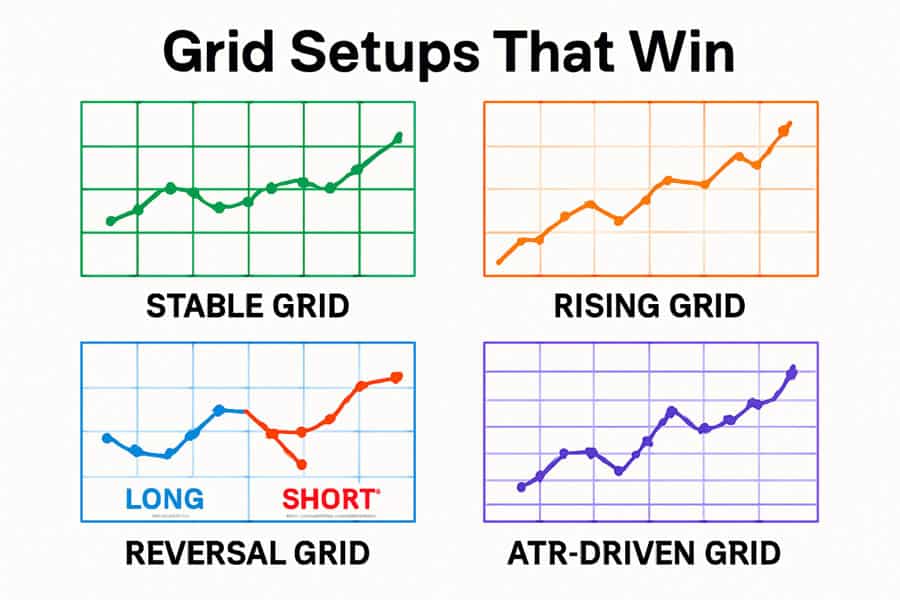
Once you’ve identified a promising market condition and a suitable pair, the next step is to choose the right grid setup. Each setup is designed for a specific market dynamic and has unique requirements for the pairs it will work best with. Using the wrong setup for the market you’re in is as bad as picking the wrong pair.
Stable/Neutral Grid
This is the classic grid setup, designed for sideways or range-bound markets. It involves setting a fixed upper and lower price boundary and distributing buy and sell orders symmetrically around a midpoint.
- What it is: A grid with an equal number of buy and sell levels, aiming to profit from price oscillations within a defined channel.
- When to use it: During clear consolidation phases when a pair is bouncing between stable support and resistance.
- Pair Requirements: Needs pairs with extremely high liquidity and a history of mean-reversion. This is the domain of the best currency pair for grid trading, like EUR/GBP, or crypto majors like BTC/USDT and ETH/USDT.
Rising/Bullish Grid
This setup is tailored for smooth, controlled uptrends. Instead of a fixed range, the grid is designed to follow the price upward, capturing profits from volatility along the way.
- What it is: A grid skewed with more buy lines than sell lines, often with a “trailing up” feature that automatically moves the entire grid higher as the price climbs.
- When to use it: In a clear, established bull market that isn’t prone to sharp, deep pullbacks.
- Pair Requirements: Best suited for large-cap assets with strong underlying momentum, such as BTC/USDT or ETH/USDT during a bull run. The pair must trend smoothly.
Reversal Grid (Futures)
A more advanced strategy typically used in the futures market, this setup aims to profit from choppy price action by simultaneously playing both sides of the market.
- What it is: A grid with two distinct zones: a lower zone for placing long (buy) orders and an upper zone for placing short (sell) orders.
- When to use it: In volatile, choppy markets where the price makes significant swings in both directions without a clear overall trend.
- Pair Requirements: Demands pairs with excellent liquidity to handle both long and short positions without significant slippage. It requires a futures exchange with reliable execution.
ATR-Driven/Adaptive Grid
This is a more sophisticated approach that uses a volatility indicator, usually the Average True Range (ATR), to dynamically set the grid’s parameters.
- What it is: A grid where the spacing between levels is determined by the current ATR value. When volatility is high, the spacing widens; when volatility is low, it tightens.
- When to use it: For pairs whose volatility changes over time. It helps prevent having a grid that is too tight during a volatility expansion (leading to many small, insignificant trades) or too wide during low volatility (leading to no trades at all).
- Pair Requirements: Ideal for any instrument, but particularly useful for pairs that can experience sudden shifts in their trading behavior due to news or market events. This makes it a contender for finding the overall best pairs for grid trading.
How to Find the Best Pair for Your Strategy
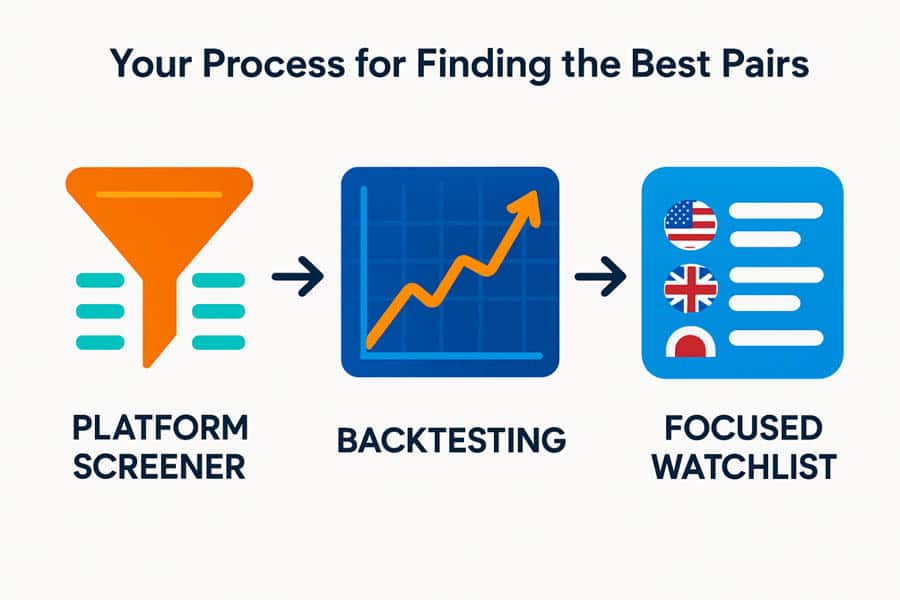
The theory is great, but how do you apply it in practice? Finding your ideal trading pair is a process of filtering and discovery, using the tools available on your trading platform. It’s about moving from a long list of potential candidates to a shortlist of high-probability pairs that match your risk tolerance and chosen strategy.
Start with Platform Discovery Tools
Most modern crypto exchanges and brokers offer powerful filtering and discovery tools. Don’t just pick a pair because it’s popular. Use these tools to build a data-driven case. I often combine multiple filters to narrow down the universe of assets. For instance, you could filter for:
- Quote Asset: Start by filtering for pairs quoted against a stablecoin like USDT to remove the volatility of the quote currency itself.
- TradingView Signals: Filter for pairs that have a “Buy” or “Strong Buy” signal on a relevant timeframe (e.g., H4 or D1).
- Backtest Performance: Look for pairs that rank highly in 30-day or even 120-day backtests for grid strategies.
- RSI Filter: Add a filter for pairs that are in an oversold condition (e.g., RSI below 40) to potentially start a grid at a favorable entry point.
By layering these filters, you can quickly identify assets that are technically primed for a grid setup.
Use Strategy Widgets & Backtest Lists
Many platforms, like Bitsgap or 3Commas, have “strategy widgets” or pre-configured backtest lists. These are invaluable resources. They show you which pairs have generated the highest returns with grid bots over various lookback periods (3-day, 7-day, 30-day). This isn’t just raw data; it often includes the exact grid settings that produced those results. This is one of the most effective shortcuts to finding the best pairs for grid trading, as it shows what’s working right now.
Favor High Volume and Consistent Behavior
As you build your shortlist, manually review the charts for each candidate on a higher timeframe (H4 to D1). You’re looking for visual confirmation of the characteristics we’ve discussed: consistent, channel-like behavior and sustained high volume. Discard any pairs that have erratic price action, massive wicks, or long periods of low volume. The chart should look “clean” and predictable. This simple visual check can save you from pairs that look good on paper but behave erratically in practice.
Phase Your Deployment
Finally, timing is everything. Even if you’ve found the perfect pair and the perfect setup, launching your grid at the wrong moment can lead to immediate drawdown. Avoid initiating a new grid during a major breakout or right before a significant macroeconomic news release (like an FOMC meeting or CPI data). The best time to deploy is *after* a range has been clearly established or a trend has shown signs of slowing down. Patience in deployment is a hallmark of an experienced grid trader.
Crypto Pairs: Playbooks

The crypto market offers a diverse range of assets, each with a unique personality. For grid trading, we can group them into risk tiers. The core of any portfolio should be built on low-risk, highly liquid pairs, with smaller allocations to higher-risk assets if you’re an experienced trader seeking higher returns.
Low-to-Moderate Risk (Core Portfolio)
These are the workhorses of crypto grid trading. They offer the best combination of liquidity, predictable behavior, and reliable execution, making them the foundation for identifying the best pairs for grid trading.
BTC/USDT
- Why it works: As the market leader, BTC/USDT boasts unparalleled liquidity and the tightest spreads on nearly every exchange. This minimizes slippage and allows for very dense grids. Its price action is characterized by frequent periods of consolidation, which are perfect for stable grids.
- Best setups: A Stable/Neutral grid is the go-to during its frequent consolidation phases. In clear bull markets, a Rising grid with a trailing-up feature can capture both the trend and its volatility. An ATR-based grid is excellent for adapting to the volatility expansions that occur around major news.
- Tactics: For multi-week holds, use wider ranges to avoid getting stopped out by larger swings. During trending phases, it’s crucial to re-center the grid weekly to keep it aligned with the price action. Always prioritize exchanges with the lowest maker/taker fees to protect the small profit steps.
ETH/USDT
- Why it works: Ethereum offers liquidity second only to Bitcoin but often has slightly higher short-term volatility. This can be an advantage for grid traders, as it means more grid levels are crossed, leading to more frequent trades and potentially higher profits.
- Best setups: Similar to Bitcoin, ETH/USDT works exceptionally well with Stable grids in ranging markets and Rising grids in uptrends. When news about the Ethereum ecosystem or high gas fees causes volatility to spike, switching to an ATR-adaptive setup is a smart move.
- Tactics: A mid-range grid density often works best. Monitor the calendar for major ecosystem catalysts like network upgrades (e.g., the former “Merge”), as these events can temporarily widen the trading range and may require you to adjust your grid spacing proactively.
BNB/USDT
- Why it works: As the native token of Binance, BNB/USDT benefits from extremely high volume and liquidity on the world’s largest exchange. The key advantage is the potential for fee reductions, which directly boosts the net profitability of a high-frequency grid strategy. Its behavior is often range-bound, making it a reliable candidate.
- Best setups: A Stable grid is the primary strategy for BNB/USDT. On exchanges that offer fee incentives, you can run tighter grids with smaller profit steps, which can be very effective. A Rising grid can also work, but it’s often best utilized on its native platform.
- Tactics: In low-volatility periods, you can tighten the grid to capture smaller movements. The core tactic here is to maximize the fee advantages. If your exchange offers reduced fees for using BNB, ensure this is enabled to protect your profitability. This makes it a strong contender for the best pairs for grid trading from a cost perspective.
Medium Risk (Active Monitoring Required)
These pairs offer higher potential returns due to their greater volatility, but they come with increased risk. They are not “set and forget” assets and require active weekly management.
SOL/USDT, XRP/USDT, MATIC/USDT
- Why they work: This group of large-cap altcoins is known for cyclical, channel-like phases where they trade within a predictable range for weeks at a time. This behavior is ideal for grid bots, but they are also more susceptible to news-driven volatility than the majors.
- Best setups: Stable grids are the most common setup during their established ranging periods. A Rising grid with an upward skew can be profitable when momentum is orderly and the broader market is bullish. However, it’s critical to avoid running grids during major news events, especially regulatory news for a pair like XRP.
- Tactics: Use slightly wider spacing (e.g., 2-3% between grids) to account for the higher volatility. Weekly re-centering of the grid is not just recommended; it’s mandatory. I make it a habit to pause my grids on these pairs a day or two before any major scheduled news release to avoid getting wiped out by a sudden spike.
High Risk/High ROI (Experts Only)
This category is for seasoned traders who can dedicate time to active, manual supervision. The potential for high returns is significant, but so is the risk of rapid, total loss of the grid’s margin.
DOGE/USDT, SHIB/USDT, New Listings
- Why they’re risky: These assets are driven almost entirely by news, hype, and social media sentiment. Their price action is characterized by sudden, explosive spikes and equally rapid crashes. This creates immense gap risk, where the price can jump over your grid levels, and high slippage is common. They can break through an entire grid range in minutes.
- Best setups: If you choose to trade these, use very short-duration test grids with tight stop-losses. Manual supervision is essential. An ATR or Standard Deviation-driven grid is crucial to automatically widen the spacing during volatility explosions, which can help prevent overtrading and margin exhaustion.
- Tactics: Use a very tight range with a non-negotiable stop-loss or a “kill-switch” protocol to shut down the bot if the price moves outside your predefined zone. Reduce the number of grid levels to limit exposure. Monitor social media and news catalysts constantly. This is a purely tactical environment, not a strategic one.
Forex Pairs: Playbooks
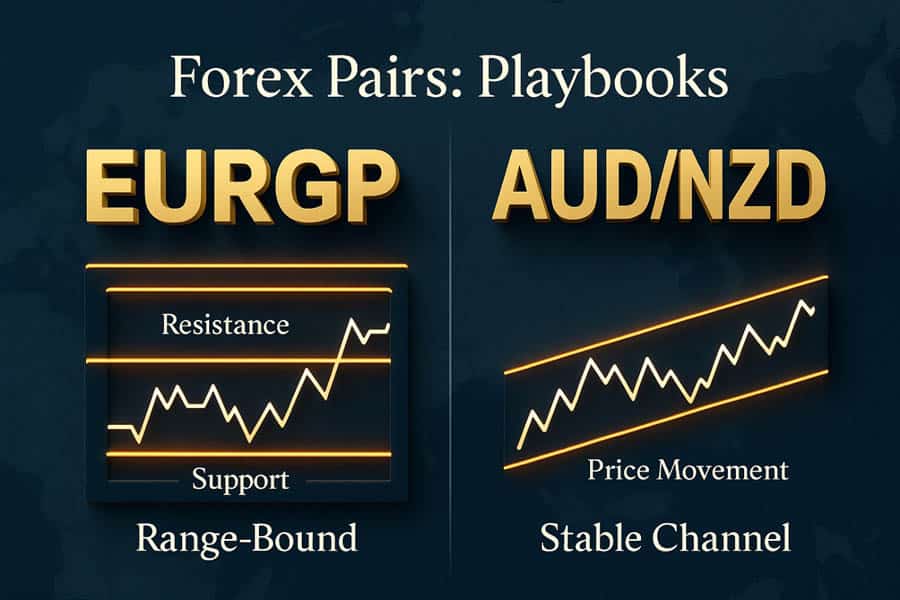
The forex market operates differently from crypto. It’s generally less volatile on a percentage basis but is dominated by macroeconomic trends. The key is to separate the pairs known for ranging from those known for trending. This distinction is critical for choosing the best currency pair for grid trading.
Range-Biased Candidates
These pairs are the traditional favorites among forex grid traders. Their economies are often closely linked, causing them to trade in predictable ranges over long periods.
EUR/GBP
- Why it works: This is historically one of the most range-bound and mean-reverting major currency pairs. The economies of the Eurozone and the UK are deeply intertwined, which often prevents the exchange rate from trending too far in one direction. It is often cited as the textbook best currency pair for grid trading.
- Best setups: A classic Stable grid is the ideal setup. Due to the pair’s lower daily ATR compared to many crypto assets, tighter grid spacing (e.g., 15-25 pips) is common. Using ATR-based sizing can help optimize profitability by adapting the pip step to the current volatility regime.
- Tactics: The main risk here is macroeconomic policy divergence. Avoid running a tight grid through major Bank of England (BoE) or European Central Bank (ECB) policy meetings, as these events can cause rare but powerful breakouts from the established range.
AUD/NZD
- Why it works: The Australian and New Zealand economies are both heavily influenced by commodity prices and trade with China. This linkage often keeps the AUD/NZD cross trading within well-defined ranges. It’s another classic mean-reverting pair well-suited to grid strategies.
- Best setups: A Stable grid is the primary choice. During weeks with major commodity reports or Chinese economic data releases, switching to an ATR-based adjustment for your grid spacing can help manage the temporary increase in volatility.
- Tactics: Always keep an eye on the macroeconomic calendar. If you see a week packed with high-impact data for either Australia or New Zealand, consider widening your grid spacing or reducing the number of grid levels to lower your exposure. Also, be mindful of spreads widening during illiquid Asian session hours.
Handle with Caution (Trend-Prone Pairs)
These pairs are known for their ability to develop strong, durable trends that can persist for months. Using a standard, neutral grid on them is extremely risky, but they can be traded with modified strategies.
USD/JPY, GBP/JPY
- Profile: These pairs, particularly GBP/JPY, are notorious for their strong and sustained trends, driven by interest rate differentials and risk sentiment. A simple stable grid will almost certainly fail. They are not a good choice if you are looking for the safest, best currency pair for grid trading.
- Best setups: If you must trade them with a grid, you cannot use a neutral setup. An ATR-based grid is the bare minimum. A better approach is a directional or “Rising” grid that trails the trend. For advanced traders, a Reversal futures grid can work, playing for bounces in both directions, but this requires significant skill and margin.
- Tactics: You must increase the spacing between grid levels significantly. Lower the grid count to reduce overall risk. Applying a trailing-stop feature and performing weekly re-centering are absolutely essential. It is highly advisable to pause any grids on these pairs leading into major central bank policy events (Fed or BoJ).
Conclusion: Process Over Picks
Ultimately, the quest for the best pairs for grid trading is less about a static list and more about a dynamic process. While pairs like BTC/USDT and EUR/GBP offer a fantastic starting point due to their liquidity and predictable behavior, the true skill lies in matching the right pair with the right market condition and the right grid setup. By using platform filters, prioritizing liquidity, understanding volatility through tools like ATR, and maintaining strict risk protocols, you can build a resilient and profitable automated trading system for the long term.
References: + + +
Can you use a grid trading bot in a bear market?
It is extremely risky. A standard grid bot in a downtrend will accumulate losing buy positions without triggering sell orders. Advanced traders might use a short-only grid or a reversal grid on futures, but it’s not recommended for beginners. It’s better to wait for the downtrend to stabilize.
How do I determine the best grid spacing?
A good starting point is the pair’s Average True Range (ATR). Set the spacing to a fraction of the daily ATR (e.g., 25% of ATR). Alternatively, a simple percentage-based rule (e.g., 1-2% for major pairs) works well. The goal is to have enough space to make the profit per trade worthwhile after fees, but tight enough to trade frequently.
Is grid trading better for crypto or forex?
It works well for both, but the pair selection is different. Crypto often offers higher volatility, which can mean more trades and profits, but also higher risk. Forex offers more stable, range-bound pairs like EUR/GBP, which are ideal for lower-risk, steady grid strategies. The best currency pair for grid trading is often less volatile than the best crypto pair.
How much capital do I need to start grid trading?
This depends on the pair and the density of your grid. You need enough capital to cover all your buy orders if the price were to fall through your entire grid. For a micro-grid on a cheap altcoin, you might start with a few hundred dollars. For a wider grid on BTC or a forex major, you would likely need several thousand to be effective.
What is the single biggest mistake new grid traders make?
The biggest mistake is setting up a grid on a strongly trending pair and walking away. New traders often get lured in by a pair’s recent performance without realizing it’s in a powerful trend that will quickly invalidate their static grid range, leading to maximum drawdown.






